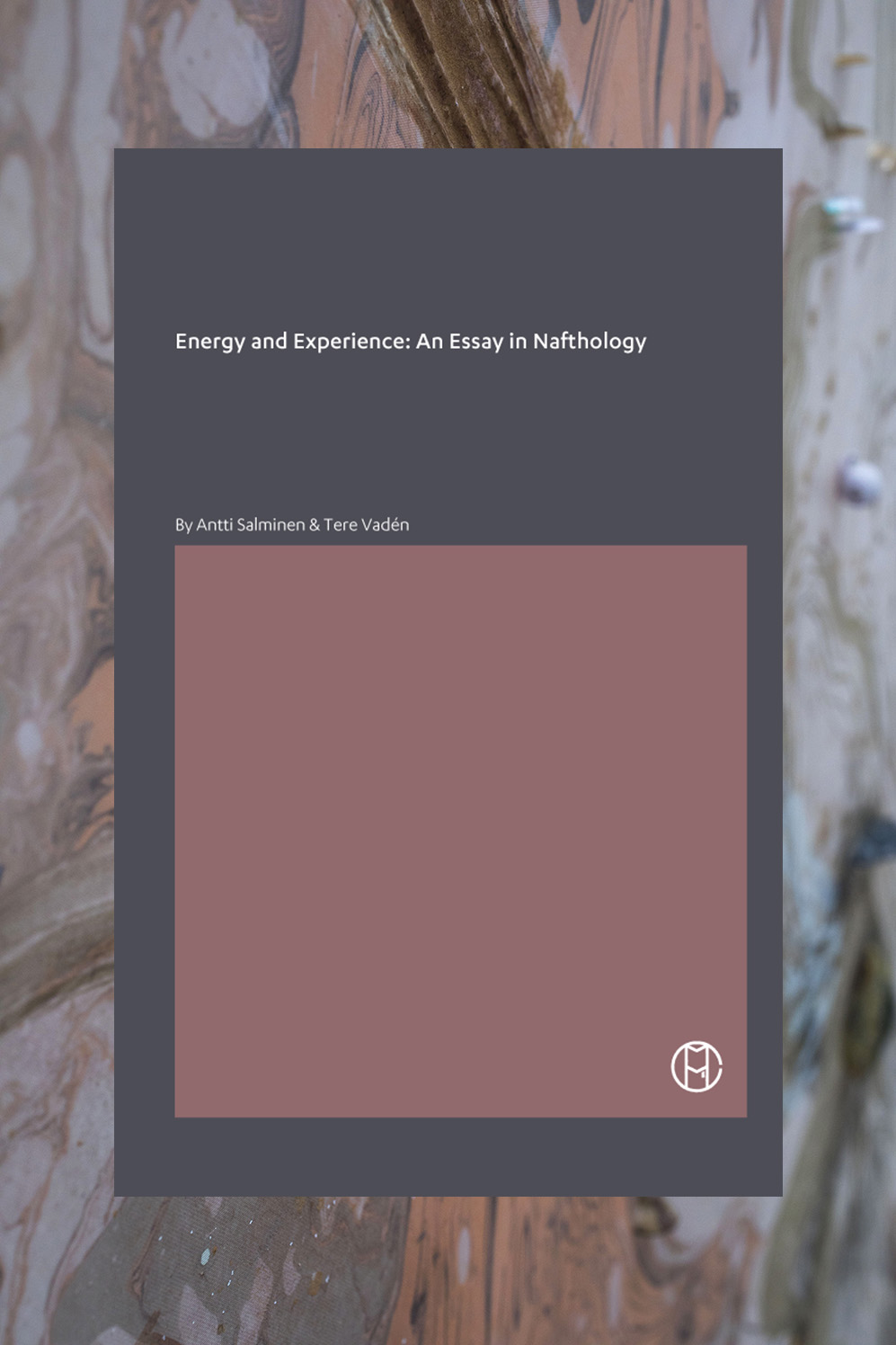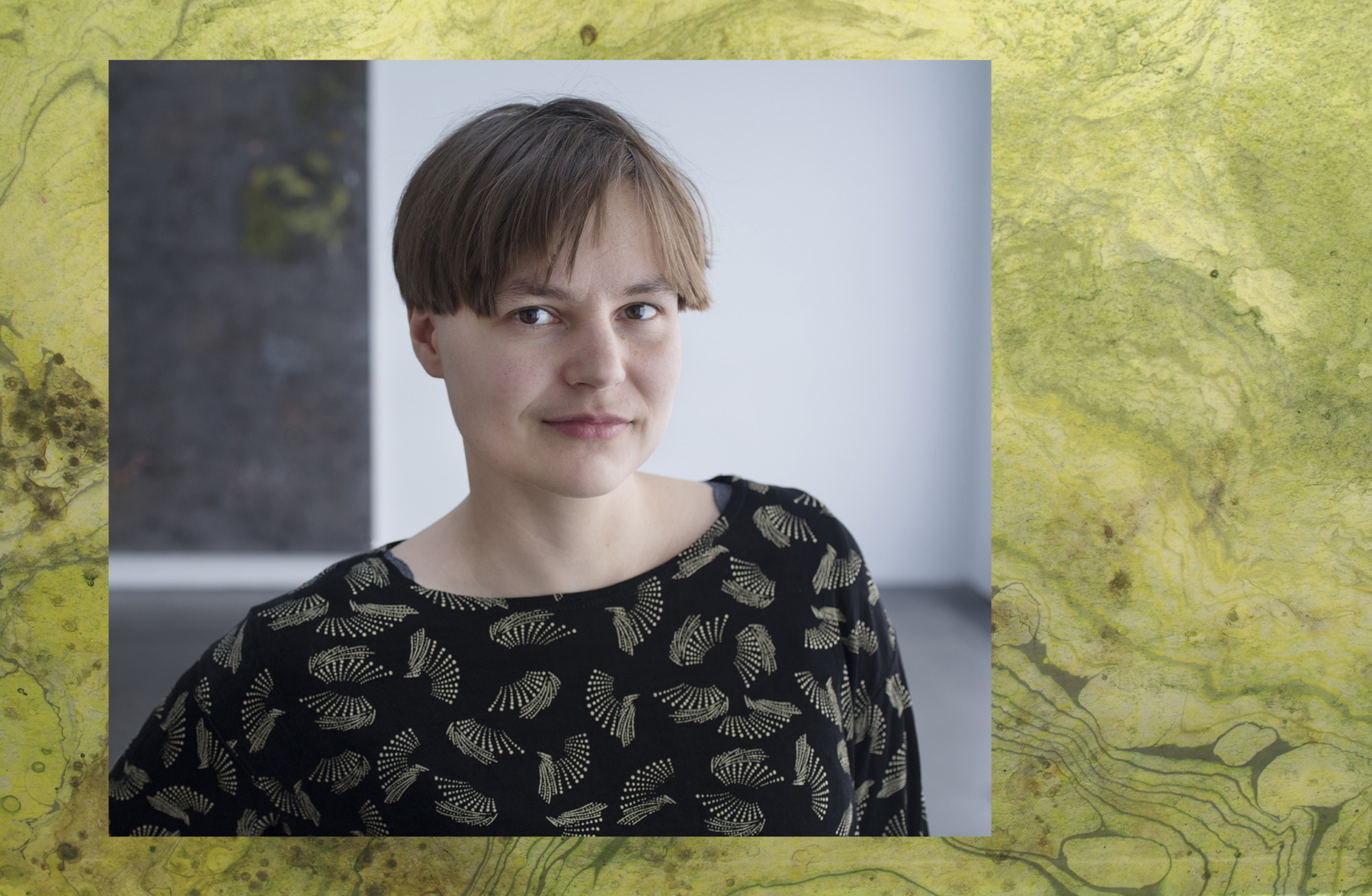In a Nutshell: Alma Heikkilä selects five texts that recognize the interdependent relationship between humans and other lifeforms
The Finnish painter and activist on fossil fuels, microbiology, and her love of slime molds.
Apart from tucking into the occasional probiotic yogurt, most of us don’t give much thought to the bacteria—good and bad—that live inside our bodies. But a healthy and diverse microbiota is vital for everything from developing our immune systems to digesting food. “My body, its evolution and its future, depends on things that are so small I can’t even see them with my bare eyes,” says Alma Heikkilä, an artist whose work explores these largely misunderstood single-cell organisms. “Microbes are everywhere; they’re also inside and a part of mammals’ bodies, where they provide the most essential life-sustaining services.”

The current estimate is that there are ten times more microbes than human cells in our bodies, yet the scientific community still knows so little about them. For Heikkilä, this means that the field “offers a lot of space for imagination.” For her most recent body of work, commissioned by the Museum of Contemporary Art Kiasma, she created a series of paintings that radically enlarge bacteria and fungi that exist within the human body and could normally only be seen through the use of a microscope. “For artists, I think it’s interesting that so many things we are dependent on are so difficult to experience bodily,” explains Heikkilä. “I’m interested in the type of life that is difficult to see. It’s nice to try and make their existence more tangible.” She is quick to point out, though, that microbial life exists everywhere: “The exhibition sees human body only as one of the places of life. We are deeply dependent on the microbial life that happens in all places, like the soil, air, and sea.”
Painted using a mix of commercially available pigments and ones that Heikkilä made herself from sand, plants, and mushrooms found in the local forest. The resultant paintings have craggy, textured surfaces, which are emphasized by Heikkilä’s choice to use only natural light (rather than the usual neon or spot lights) when showing the works. “I was my way of bringing attention to the air and the [physical exhibition] space,” she says.

“We’re facing troubles that won’t be solved anytime soon.”


Heikkilä’s paintings are an extension of her belief that in order to combat climate change we need to stop thinking of humankind as unique and individual from other life forms. She is the co-founding member of Mustarinda Association, a group of artists and researchers whose goal is “to promote the ecological rebuilding of society, the diversity of culture and nature, and the connection between art and science.” Heikkilä started the organization, which is based in an old elementary school surrounded by a forest in the Finnish countryside, with other environmentally-minded students when she was at the Finnish Academy of Fine Arts ten years ago. “At that time, there wasn’t any discussion in art schools about climate change or nonhumans or any of the things that we found somehow interesting and important,” she recalls. “We wanted to do something that wasn’t like a project… because of the way that art funding works, often artists do things that start and end very quickly. We wanted to make something that could last. We’re facing troubles that won’t be solved anytime soon.”
Five texts that recognize the interdependent relationship between humans and other lifeforms

“Fossil fuels have made modern life possible for the last 150 years; this book looks at our current era as deviant condition that has been mistaken for something normal. I’ve found it very useful. It’s really vital in a time when we need to rethink how we use energy.”
A symbiotic view of life: we have never been individuals by Scott F. Gilbert, Jan Sapp, Alfred I. Tauber (2012)
Often in cultural narratives we highlight the individuality of humans. We tell the story of survival and competition as a natural stage of being. This paper discusses how research done in the last decade has “showed significant interaction with animals and plants with symbiotic microorganisms that disrupt the boundaries that heretofore had categorized the biological individual.”
Philosophy of Microbiology by Maureen O’Malley (2014)
Microscopic life forms have ruled the planet throughout history, and Maureen O’Malley’s writing helps the reader understand life as seen through this lens. Microbes are everywhere, also inside and part of mammals’ bodies, where they provide the most essential life sustaining services. This book reminds me how humans play such a minor part in the biosphere, which is good to keep in mind when discus terms like “anthropocene” because even though we can alter the planet, the basis of life is constantly created and remade by microbes. Since most of the microscopic life forms have not been “found” or studied, and, most likely, never will be, this field offers a lot of space for imagination.”

“Mustarinda Magazine has been published since 2012. During these years a lot has happened in the field of art and ecology in Finland and internationally, which makes me very happy. There are a lot of big changes that need to be made in how societies function, and in order to change we need a lot of discussion and cooperation between different fields of study. By following Mustarinda Magazine I’ve been introduced to many different approaches in thinking and doing.”
Suomen Limasienet by Marja Härkönen and Elina Sivonen (2012)
“Slime molds are neither mushrooms, plants, nor animals. In Finland, there are 204 different types of slime molds and this book, which is unfortunately only in Finnish, introduces them all with images and texts. Thinking about and looking at slime molds helps me to think beyond the stiff and old fashioned ideas about nature and species. They fascinate me endlessly and remind me of the mind-blowing beauty that cannot be imitated or reconstructed by humans.”
Alma Heikkilä is a Finnish artist based in Helsinki working primarily with subjects that lie beyond human perception, such as bacteria and fungi, as well as the biosphere and climate change. Her solo exhibition at Kiasma runs until July 28, 2019.
This interview was produced as part of our new series In a Nutshell. Head over to read more articles where creatives around the world talk us through objects that inspire their work.
Text: Chloe Stead
Photography: Finnish National Gallery / Petri Virtanen

